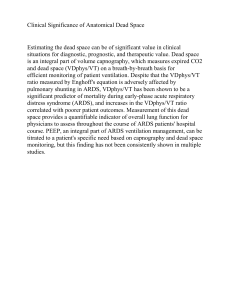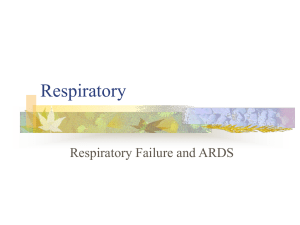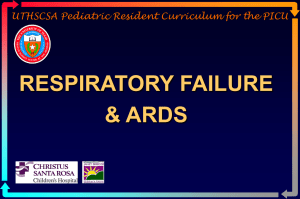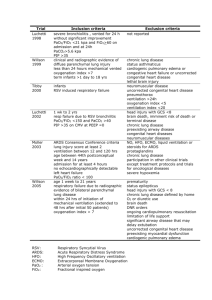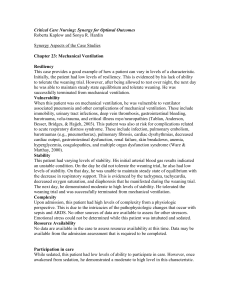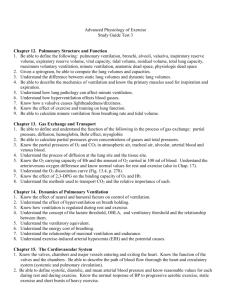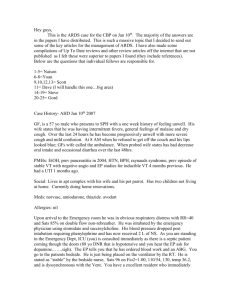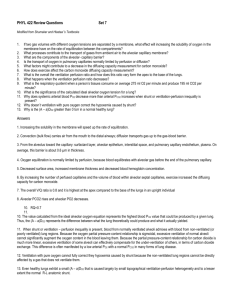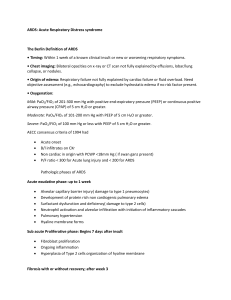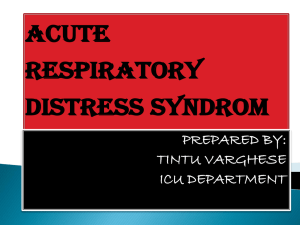Respiratory Failure - ARDS
advertisement
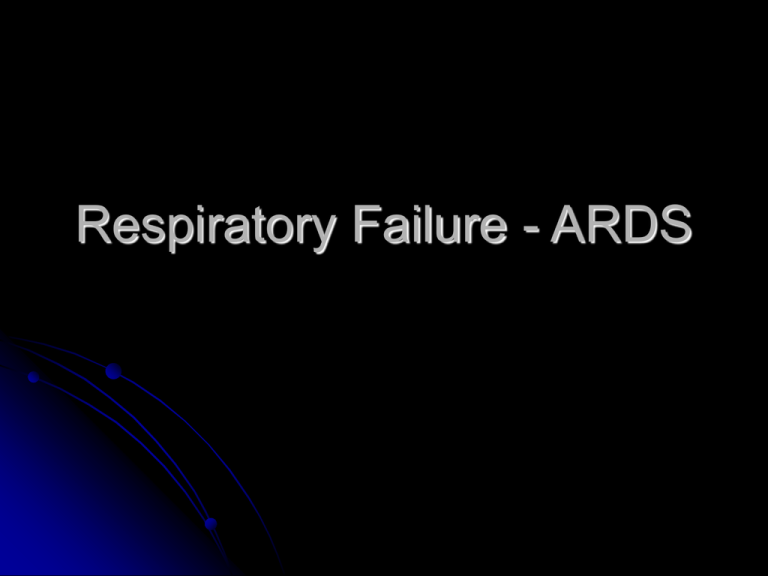
Respiratory Failure - ARDS 26 year old man with no past medical history developed progressive shortness of breath and cough with fevers. His vital signs in the medi-centre are 102/60, heart rate 112, respiratory rate of 30 and oxygen saturations of 84% on room air. EMS is called and he is taken to the ER. Enroute, he is given flush oxygen and his saturation improve to 87%. Admission CXR This patient is hypoxic despite flush oxygen. What is the primary pathophysiology behind the hypoxia? How does shunt cause hypoxia and why is it resistant to oxygen therapy? What is your initial management? His condition continues to decline. His shortness of breath worsens and he starts to become confused. His oxygen saturations are now 83%. What is the role for non-invasive mechanical ventilation at this time? CXR 12 hours post admission What has happened? The patient has been intubated and is now on an FiO2 of 80%. His last ABG demonstrates a pH of 7.30, PCO2 40, PO2 60, HCO3 18. How is the diagnosis of acute respiratory distress syndrome (ARDS) made and how is it different from acute lung injury? List conditions that predispose to developing ARDS. Consider: Sepsis Aspiration of gastric contents Severe trauma and burns Massive blood transfusion TRALI Drugs and alcohol Bone marrow transplant Describe the pathophysiological stages of ARDS. Inflammatory stage Edema formation Fibrosis What are some of the consequences of ARDS Impaired gas exchange – V/Q mismatch and shunt Decreased lung compliance Pulmonary hypertension Over the course of the next 12 hours, his oxygen requirements continue to climb. The RT reports that he is very difficult to ventilate and needs high airway pressures to maintain a normal PCO2. What are the consequences of the current ventilation strategy? What other way can he be ventilated? What is barotrauma, volutrauma, and atelecatrauma? How does lung protective ventilation mitigate the above traumas? Two days later, the patient has a sudden deterioration in oxygenation and blood pressure. CXR reveals: What are some other complications of prolonged mechanical ventilation and ARDS? After the chest tube is inserted, the patient’s ventilation continues to be a problem with a pH of 7.15 and oxygen saturations of 81% on maximal lung protective ventilation. What other rescue ventilation strategies could be tried? After converting to HFOV, the patient stabilizes. Four days later, his oxygen requirements increase to 100% again and he develops a fever and WBC of 15.3 with 10% bands. What has likely happened? How can we find out? How is a ventilator associated pneumonia different from other pneumonias? How is it treated? Questions??
